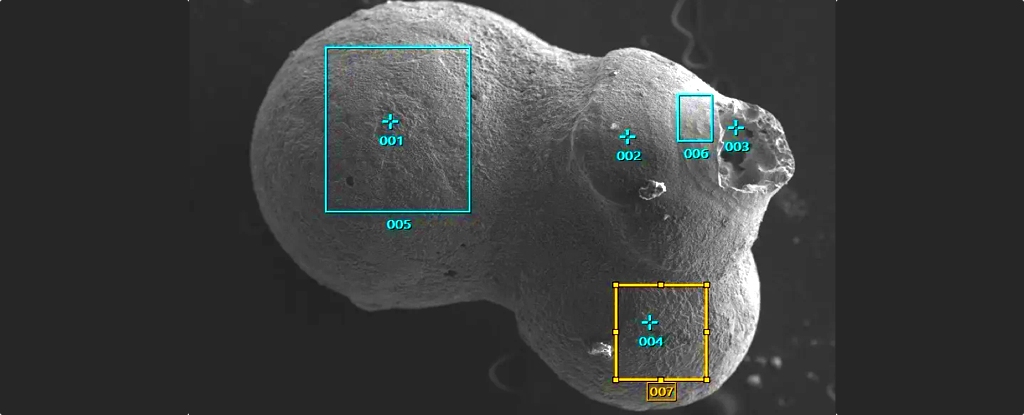A sprinkling of tiny beads recovered off the coast of Papua New Guinea might have come from a rock with a rather interesting history, having crossed light years of space from its origin around a star that’s not our Sun.
While the conclusions are yet to be appropriately reviewed, they’re already provoking debate in the scientific community as researchers caution against reading too deeply into the analysis.
The meteor was traced by US government satellites before disintegrating over the Pacific in 2014. The unusual velocity of the bolide meteor, classified CNEOS 2014-01-08 (or more simply, IM1), attracted interest as a potential missile from afar.
It was an opportunity too good to miss for renowned Harvard University astronomer Avi Loeb, who founded the Galileo Project in 2021 to search for signatures of technology of extraterrestrial origin. This June, he led an expedition to search for remains of IM1.
Using an array of powerful rare-earth magnets, members of the project’s search team sifted hundreds of tiny spherules 0.05 to 1.3 millimeters in diameter out of sediment 2 kilometers (1.2 miles) below the surface, around 85 kilometers north of Manus Island.
A preliminary evaluation of 57 of the mineral objects by a team of researchers from Harvard University in the US suggests at least a few of them don’t reflect the kind of chemistry we’d expect of our own Solar System, fueling speculation that IM1 crossed interstellar space before slamming into our planet’s atmosphere.
“This is a historic discovery, marking the first time that humans hold materials from a large interstellar object, and I am extremely pleased with these results from this rigorous scientific analysis,” says American entrepreneur Charles Hoskinson, who helped fund the expedition to hunt down the meteor’s remains.
That analysis involved teasing out the ratio of elements making up a selection of the beads, which are assumed to have been cast from the surfaces of the meteor’s fragments as it tumbled through the atmosphere prior to splashing down.
Variations in isotopes of iron were found to be consistent with having undergone a traumatic entry through our atmosphere, supporting the hypothesis the spherules aren’t terrestrial in origin.
Being heavily enriched in the metals beryllium (Be), lanthanum (La), and uranium (U), the particles also don’t seem like the kinds of materials we’d find in our own planetary neighborhood. In fact, this particular ratio has never been seen before in any meteorite, suggesting a rarity that points to a birthplace far from our own Solar System.
The analysis contributes to a growing field of study on the exchange of rocky materials between stars. In theory, objects orbiting one star could be flung with enough force to send it into the orbit of another on a fairly regular basis.
In cosmic terms, however, ‘regular’ could still make it a rather rare catch for human observation. We only confirmed our first local interstellar exchange in 2017, when the odd behavior of an asteroid dubbed Oumuamua caught our eye.
Finding the remnants of such a visitor on Earth’s surface would be quite a score for astronomers. So much so, the case for any one specimen’s origins would need to be fairly watertight, extending far beyond a preliminary chemical sniff test.
As with any landmark discovery, the findings are attracting significant scrutiny, with expert opinions ranging from reserved skepticism to emphatic doubt.
Given the Galileo Project’s goal of hunting down not just materials of extrasolar origin, but signs of alien technology, the conversation is bound to be polarized, attracting a spectrum of critical and optimistic views from diverse corners of academia and beyond.
The paper itself raises the possibility that the high content of uranium just might itself be an indication that some kind of alien technology is involved. Many in the research community will have more conservative interpretations, at least until more is known about what we’re dealing with here.
To further complicate matters, the expedition itself has drawn criticism from Papua New Guinean authorities, who claim team members may have entered the country illegally on the wrong kind of visa.
Dramatic as it all may seem, science evolved as a practice to sift useful ideas from the sediment of politics, personal beliefs, and fanciful assumptions.
We will need to wait a little longer to say with confidence that this sand really did bleed from a rock that once basked in the warmth of another star. For now, we can only imagine the story it would have to tell.
This research is currently available on arXiv.org awaiting peer review.





